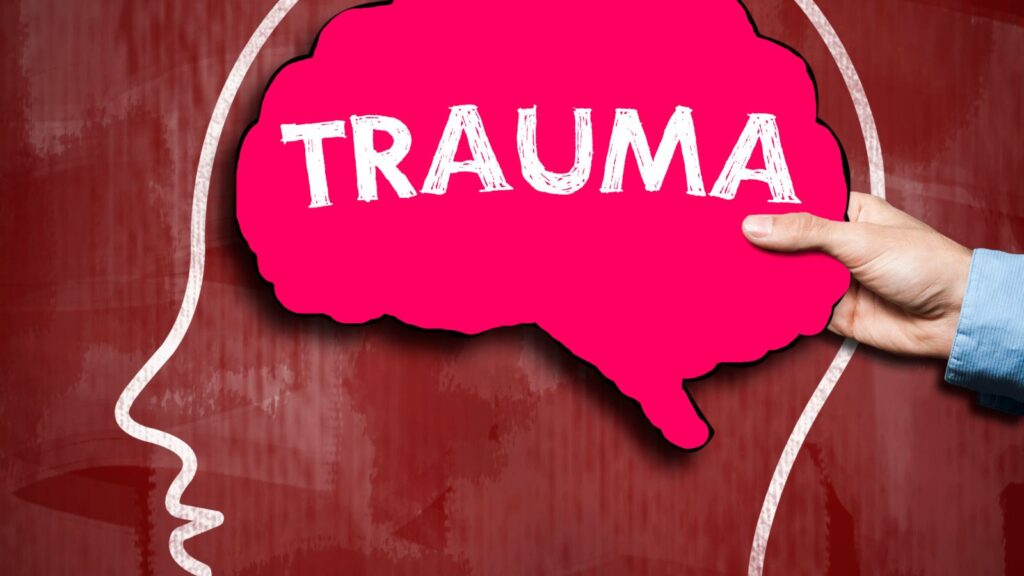Outline on Unwinding Traumatic Stress: My Tangled Self | How to Use the Untangle Method – Identify – Get Insights – Creative Self | Benefits of the Untangled Method
“I wanted to find my way back home, but there was no home. And so begins the journey of untangling.”
Angela McKinney
We all can become lost in the forest of life’s struggles, entangled in unconscious stress, threat, and fear patterns. We lose sight of what matters most as we forget who we are or who we are meant to become. Then, we become alienated from our innate nature and ties to this sacred earth, we feel orphaned from our sense of belonging.
In this article, you will learn how to locate
My Tangled Self…
The background song hums, “I will never be ready enough.” I know I am not alone, but I quickly forget the complex web that my Tangled Self constructs. My Tangled Self is the part of me that entangled me into unconscious threats, having me believe I can’t handle anything. The smallest amount of stress can string a noose around my neck to shut me down.
It escalates when I am preparing for an upcoming event or simply putting myself “out there.”. It could be an Instagram post, a speaking engagement, having to decide on my book cover, etc. Regardless. I remember a day not too long ago I was madly searching for the perfect subtitle for my book, scrolling through drafts of old manuscripts and frantically emailing friends to help. My mind was panicked, my body was drowning. My breathing was compromised; I could barely gulp tiny breaths. As I felt the little strings tighten around my throat, then I remembered my Tangled Self’s hum: I will never be ready enough.
This wasn’t the first time I was jolted into remembering, and it will not be the last time. I recognize my little song may not seem dangerous to you, but it is a death spiral for me. Its twists, twirls, and circles my psyche into dark oceans that, if not interrupted, I become engulfed.
For decades, I barely survived her rapacious spell. I became addicted to numbing this stress with sleep, food, avoidance, clutter, alcohol, and obsession. I didn’t understand how to work with this part of me, so I became all bad, all broken, all hopeless. Entrapped in this nightmare, I became an expert on how to camouflage and manage my small, uncommitted life.
The difference today is that I have a choice and therefore have peace. I understand my Tangled Self’s songs, and because I do, I intimately understand her patterns, rhythms, and dances. As I awaken to her triggering storms, I can finally find space to find my songs of liberation.

How to Use the Untangle Method for Traumatic Stress
Step 1: Identify what is going on inside
The first step of the Untangle Method is simply to recognize what is going on inside of me-
- The triggers of anxiety
- Pricks of shame
- The tightening around my throat
- The coldness in my heart.
As I wake up to this exploration, I can locate the part of me, the Tangled Self. Then as I identify her song, my heart opens with compassion, and I bear witness to this part of desperation for my support and attention.
Step 2: Get Insights, Reflect and Organise
The second step gathers the reflective and emotional intelligence of what is happening today. I call this part of us the Organizer Self. It opens the curious brain by exploring and allowing. It contacts deeper truths as it observes the Tangled Self from a different perspective.
Even though I wouldn’t say I like these feelings, I intend to build the capacity to be with all of them. Encouraging an attitude of play in the midst of the storm, I penetrate awareness that I don’t need to fix any part of me or change it. More importantly, I don’t need to judge it. And, as I did, I awakened space.
But as my inner world quiets, the pieces of myself rearrange themselves. Now with focused attention, I can collaborate. I cultivate inquiry to ask the Tangled Self what she believes, and her answer is always the same: she believes the experience will do irreparable harm and possibly kill me. Therefore, she automatically blocks me.
Being invisible is an attempt to solve my Tangled Self’s perceived life problem but ultimately creates more harm. It blocks the entrance to my purposeful life. I grow hungry, lonely, and isolated in the weeds of invisibility.
As I become conscious, I continue to investigate. I ask, “What do you need right now?” I immediately sense she needs kindness, support, and reassurance. I need to take the pressure off this part of me, I need to see she is only one part, not all of me.
Therefore, as I study her with tender eyes, the storm falls away like a costume. As I restore my heart, safety and calmness expand the stabilizing space to access kind self-talk.
I can now send her a gentle message inward, “It’s ok, you are not bad. You don’t need the perfect subtitle. It will be good enough. We have been through this so many times, and we always feel so much better when we allow a new experience to shape…..” I could feel warm sensations spin inside me. They wrapped me in self-compassion, acceptance, and love.
However, as I took in this experience, the echoes changed, and there was a distinct shift. My spirit opened, and my mind became more clear.
Step 3: Discover Your Creative Self
In the third step of unwinding traumatic stress, I shift my attention to the discovery of my Creative Self. Like the Tangled Self, the Creative Self also resides in our unconscious emotional brain. If the Tangled Self embodies our survival system, the Creative Self embodies our thriving system.
The Creative Self is rooted in an innate affinity for life and all living systems. It is based on a drive and a thrust human beings possess to emerge with life.
The Creative Self is not riddled with a negative bias of “I can’t” or concerned with managing underlying experiences of abandonment or fear. But it intrinsically understands the interconnected language of joy, belonging, and passion. It speaks in the whispers of “I can.”
It is the part of us that can realize our songs of purpose and liberation. As I collaborate with one part, a spacious room opens for another experience to emerge. The Creative Self also needs the same kindness, reassurance, and support.
As much as a part of me is terrified of taking risks, there was another part of me aching to become more unleashed to reclaim life.
Benefits of Using the Untangle Method to Unwind Traumatic Stress
This exercise took about five minutes, but it made a big difference. I was no longer caught in a frantic tug of war. My terror dissolved as I returned to the part of me that could land inside my experiences and allow the storm to pass and clarity to emerge.
The Untangle Method creates space for all aspects of myself to collaborate. I was able to proceed with my Publisher, and we arrived at a subtitle very efficiently. No drama. No trauma.
Since creating this 3-Step process, I have done versions of it with all my triggers countless times. Triggers facilitating a large workshop, asking for a higher pay rate, dealing with a triggering family member, calling for help, etc.
My triggers haven’t gone away, but how I respond to them has fundamentally changed. They don’t take over my life. I don’t get lost in the noise for too long. However, there is a spontaneous shift to increase awareness and curiosity. There is more choice and, therefore, more freedom.
Related article: Don’t Let Stress Ruin Your Business
Practice the Untangle Method with Angela McKinney!

Angela is an addiction recovery expert and speaker on habits, decision-making, and continuous growth. In addition to being a certified coach and registered financial advisor, Angela received her clinical psychology degree from Antioch University and hopes to begin a Ph.D. in Integrative Therapy in 2022. For the past twenty years, Angela McKinney has been transforming people’s lives, including her own, as a practitioner, educator, and somatic guide. Her 3-Step mind-body system, The Untangle Method, combines research in the neurobiology of trauma with a creative approach to improving the quality of our lives. Untangle & Thrive is led by Angela McKinney, and her core commitment to herself and you is to become the change you wish to seek from the world; happy, healthy, and thriving.









